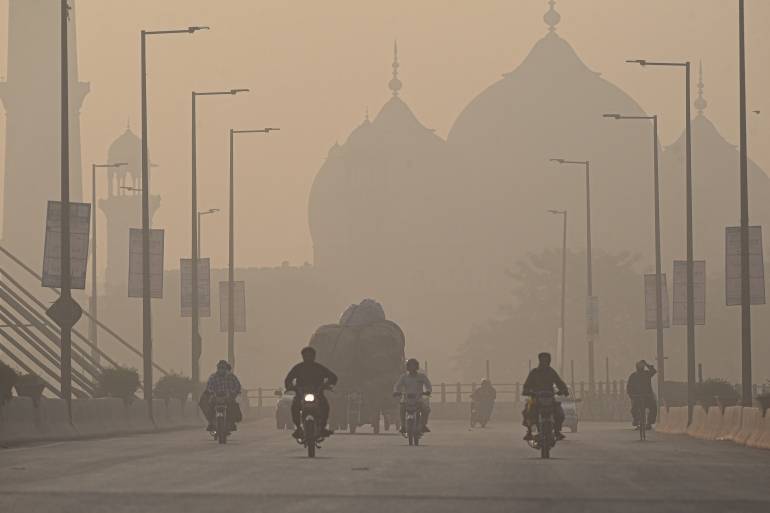STEINACH, Switzerland – Pakistan was ranked second most-polluted country after Bangladesh in 2023 , showed the 6th Annual World Air Quality Report released on Tuesday.
For this year’s report, data from more than 30,000 air quality monitoring stations across 7,812 locations in 134 countries, territories, and regions were analysed by IQAir’s air quality scientists.
The top five most polluted countries in 2023 include Bangladesh, Pakistan, India, Tajikistan and Burkina Faso.
The air quality watchdog in its report said Bangladesh recorded average PM2.5 concentration of 79.9 micrograms per cubic metre (μg/m³), which is more than 15 times higher than the WHO PM2.5 annual guideline.
Pakistan’s average PM2.5 concentration was recorded at 73.7 µg/m3, more than 14 times higher than the WHO annual guideline.
“India (54.4 µg/m3) more than 10 times higher than the WHO PM2.5 annual guideline,” the Swiss company’s report said.
Seven countries – Australia, Estonia, Finland, Grenada, Iceland, Mauritius, and New Zealand – met the WHO annual PM2.5 guideline with annual average of 5 µg/m3 or less.
A total of 124 (92.5%) out of 134 countries and regions exceeded the WHO annual PM2.5 guideline value of 5 µg/m3, the report revealed.
Africa remains the most underrepresented continent, with a third of the population still lacking access to air quality data.
Climate conditions and transboundary haze were major factors in Southeast Asia, where PM2.5 concentrations rose in nearly every country. The region of Central & South Asia was home to the top ten most polluted cities in the world.
Begusarai, India was the most polluted metropolitan area of 2023. India was home to the four most polluted cities in the world.
The most polluted major US city was Columbus, Ohio. Beloit, Wisconsin was the most polluted city in the U.S.
Las Vegas, Nevada was the cleanest major city in the U.S.
For the first time in the history of this report, Canada was the most polluted country in Northern America, with the region’s 13 most polluted cities located within its borders.
70% of the real-time air quality data in the region of Latin America & Caribbean comes from low-cost sensors.
While the number of countries and regions with air quality monitoring has steadily increased over the past six years, there remain significant gaps in government-operated regulatory instrumentation in many parts of the world. Low-cost air quality monitors, sponsored and hosted by citizen scientists, researchers, community advocates, and local organisations, have proven to be valuable tools to reduce gaps in air monitoring networks across the world.
“A clean, healthy, and sustainable environment is a universal human right. In many parts of the world the lack of air quality data delays decisive action and perpetuates unnecessary human suffering. Air quality data saves lives. Where air quality is reported, action is taken, and air quality improves,” states Frank Hammes, Global CEO, IQAir.










